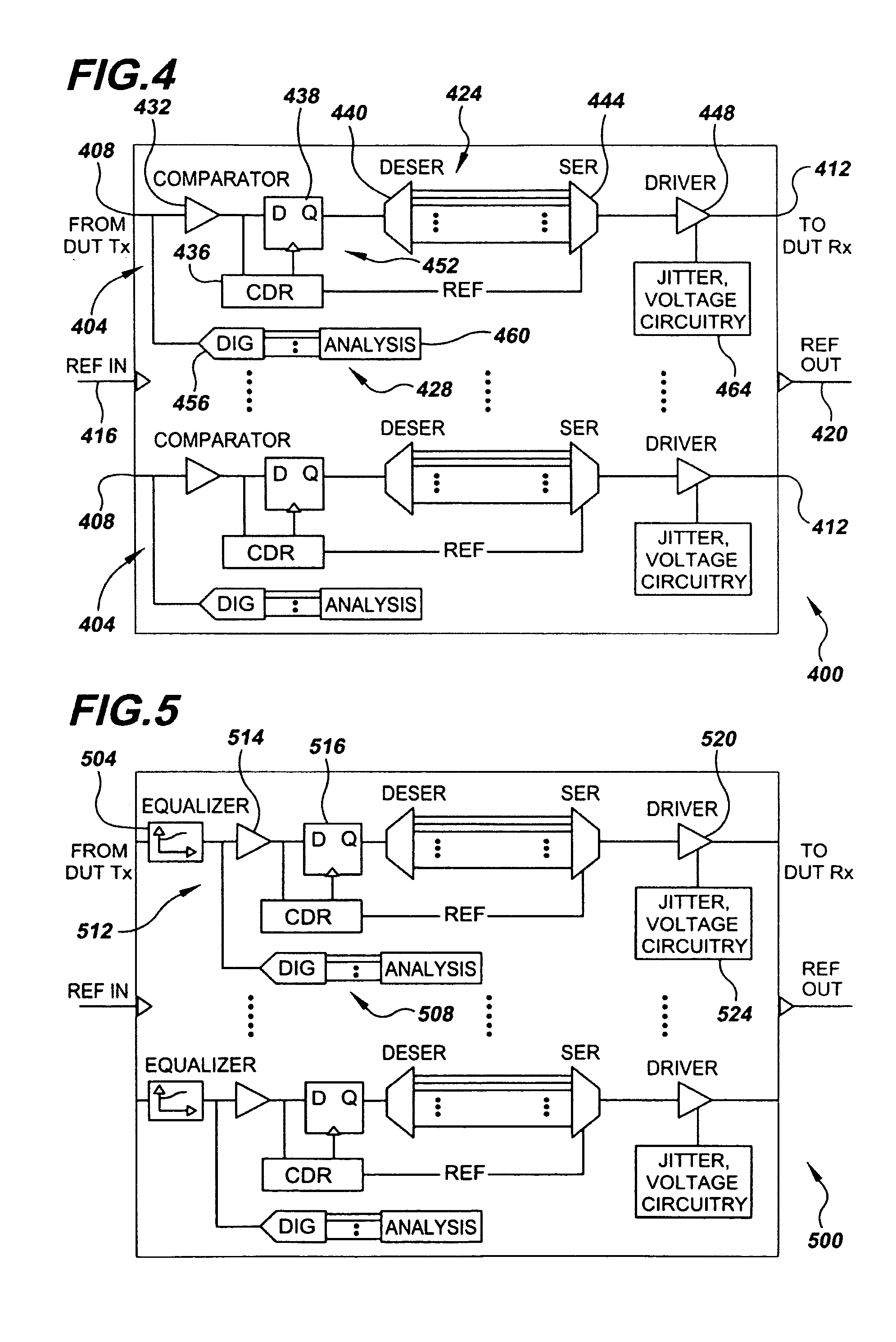System and Method for Physical-Layer Testing of High-Speed Serial Links in their Mission Environments
a technology of serial link and physical layer, applied in the field of physical layer testing of high-speed serial link in their mission environment, can solve the problems of affecting the deployment of such instruments, affecting the effectiveness of conventional physical layer test instruments, and requiring costly bench instruments
- Summary
- Abstract
- Description
- Claims
- Application Information
AI Technical Summary
Benefits of technology
Problems solved by technology
Method used
Image
Examples
Embodiment Construction
[0027]Referring now to the drawings, FIG. 1 illustrates an exemplary test setup 100 of the present invention. In this example, test setup 100 includes a high-speed serial data link 104 connecting a transmitter 108 (which may be part of a transceiver) and a corresponding high-speed receiver 112 (which, too, may be part of a transceiver) that is the intended mission-environment recipient of data transmitted by the transmitter. For the purpose of testing the physical layer of high-speed link 104, test setup 100 also includes a physical-layer tester 116 interposed in the high-speed link between transmitter 108 and receiver 112. As will be described below in detail, a primary purpose of test physical-layer tester 116 is to analyze the physical-layer of high-speed serial interfaces, such as high-speed serial link 104, as they operate within their mission environments.
[0028]By “mission environment,” and like terms, it is meant that the components (not shown), for example, motherboard and p...
PUM
 Login to View More
Login to View More Abstract
Description
Claims
Application Information
 Login to View More
Login to View More - R&D
- Intellectual Property
- Life Sciences
- Materials
- Tech Scout
- Unparalleled Data Quality
- Higher Quality Content
- 60% Fewer Hallucinations
Browse by: Latest US Patents, China's latest patents, Technical Efficacy Thesaurus, Application Domain, Technology Topic, Popular Technical Reports.
© 2025 PatSnap. All rights reserved.Legal|Privacy policy|Modern Slavery Act Transparency Statement|Sitemap|About US| Contact US: help@patsnap.com



